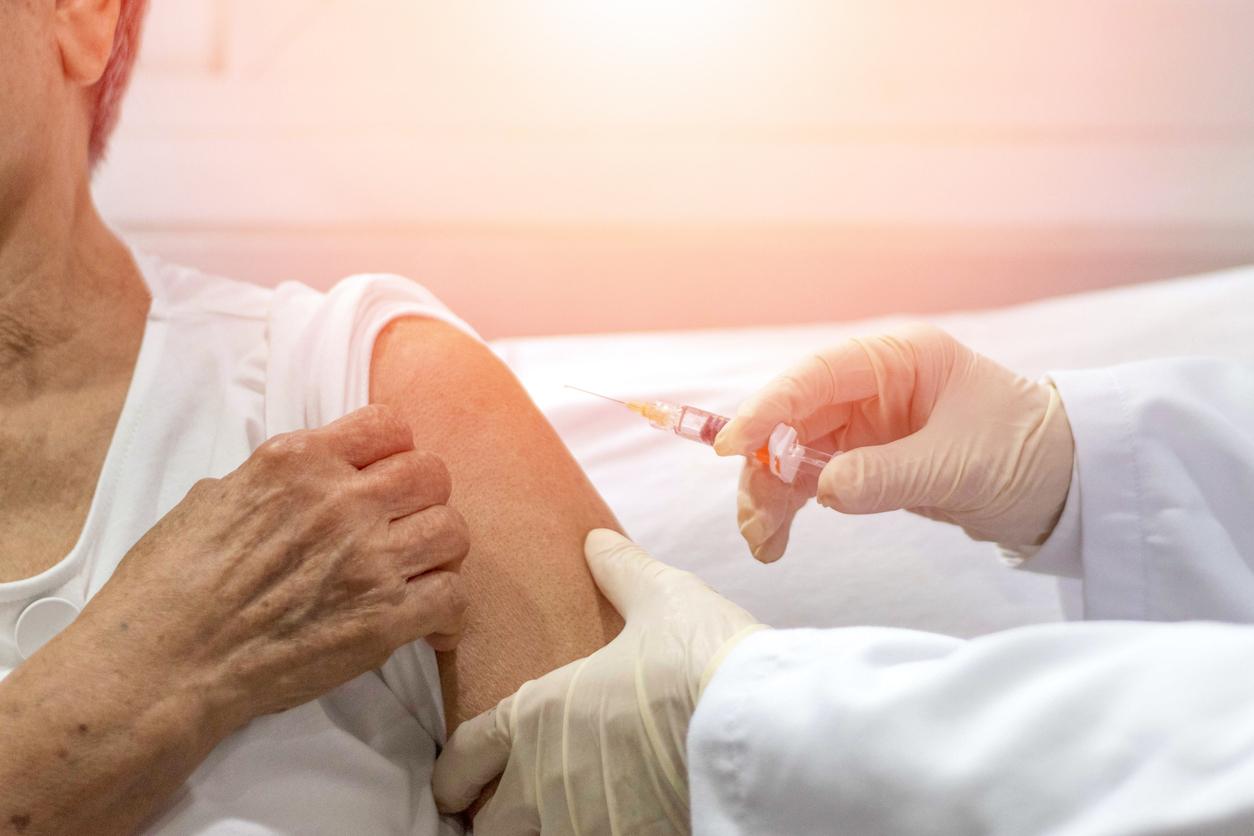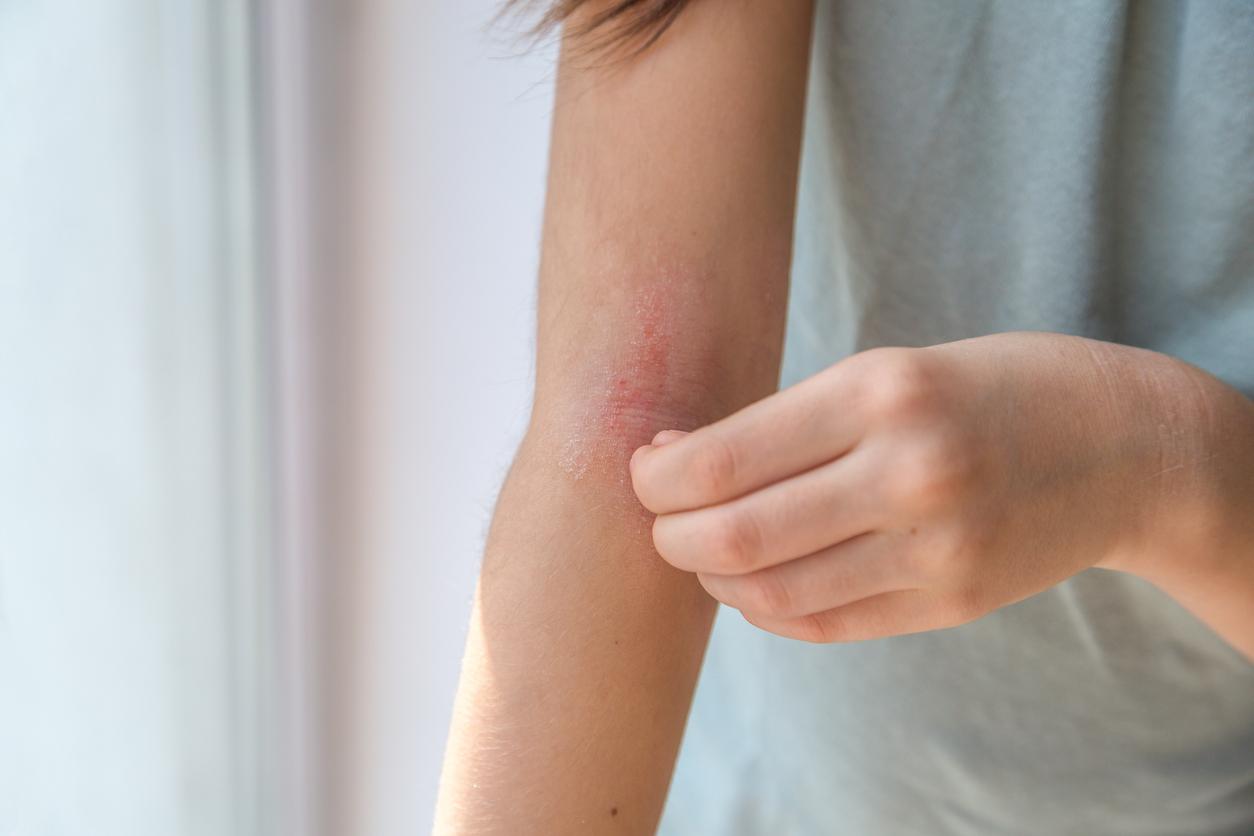
Wear slippers and dry well
Actually, swimmer’s eczema is not real eczema, but a fungal infection. This athlete’s foot is often called that because many swimmers suffer from the condition. The fungus is very common in a warm, moist environment. Such as in swimming pools, saunas and sports facilities.
Fungi can grow in the skin, nails or hair. Athlete’s foot (tinea pedis) is mainly found on the warm moist skin between the toes. The infection is usually caused by Trichophyton or Epidermophyton. Athlete’s foot is also sometimes called ‘athlete’s foot’ in English. Athlete’s foot is very common, at least 10 percent of the population suffers from it. It seems that 20 percent of adult men have it themselves.
How do you recognize swimmer’s eczema?
An infection usually starts between your fourth and fifth toes. Redness, grayish-white skin flakes and itching are common symptoms. Bacteria can grow in the moist flakes, resulting in an unpleasant odor. The place where the fungus starts is moist and white in color. A gap or loose sheets may form.
You need to treat swimmer’s eczema. If you don’t, the fungus can spread all over your foot. Red flaky spots often appear on the edge of the foot or on the sole of the foot. Sometimes with blisters and pimples. The calluses of your foot can also thicken and cracks can form.
How does athlete’s foot develop?
Fungi are everywhere, but especially the floors of swimming pools, showers and gyms are places where you can easily become infected. The fungus must first penetrate and expand the skin and luckily the skin is often able to protect itself. However, sometimes the skin’s protective mechanism does not work as well, for example:
- if the skin is irritated or damaged
- if the skin is softened by moisture or heat
- when the skin is washed with soap
The elderly, people with reduced resistance or people with diabetes mellitus are more susceptible to fungal infections. If the fungal spores have infected the skin, you do not always immediately get complaints.
Risk Factors
Athlete’s foot feeds on the outermost layer of the epidermis, the horny layer. They reproduce by means of spores that, under favorable conditions, can re-grow into fungi. Risk factors for this are:
- sweaty feet
- summer months
- tropical climate
- damp public bathing and washing facilities (swimming pool, sauna, gym, changing rooms, etc.)
An infection happened quickly
The fungus is transmitted via the skin flakes of people who are already infected: the fungus is in these flakes. If they come off, they end up on the floor of, for example, a swimming pool or shower and the fungus can infect you. So you can also get athlete’s foot on your own bathroom floor. Especially if you have a roommate who already has the condition. Contact with fungi is difficult to avoid completely. It is also not always possible to find out where you contracted the fungal infection.
Treating swimmer’s eczema
Most athlete’s foot is superficial and can do no harm. The diagnosis is usually made with the naked eye, but the dander can also be studied under the microscope. You can treat the fungus with an antifungal cream, ointment or powder. Many of these products are available without a prescription at pharmacies or drug stores. You usually need to apply them thinly twice a day and also around (2 centimeters) the spot. The fungus may have already expanded further than you can see.
An antifungal agent has an effect after two to four weeks on average. Pimples and blisters often take a little longer to recover, the same applies to the thick skin of the soles of the feet. It is important to continue using the cream or ointment until the skin has healed. Doesn’t reduce the infection? Then contact your doctor.
Antifungal Pills
In case of athlete’s foot that is deep in the skin, antifungal pills – such as itraconazole and terbinafine – are sometimes prescribed. These are heavy drugs with quite a few side effects. For example, you should not take these medicines if you are pregnant or breast-feeding, it can make the contraceptive pill less reliable and it actually enhances the effect of some other medicines.
Athlete’s foot can easily come back. It is therefore important to continue to follow the tips below. You can treat a recurring fungal infection in the same way.
Preventing athlete’s foot
Prevention is better than cure. The following tips can help you control fungal growth and prevent new fungal infections:
- Preferably wash your feet without soap. If you do use soap, rinse your feet well afterwards.
- Dry your feet well after washing, including between your toes. You can also use talcum powder between the toes.
- Keep your feet dry.
- Put on clean cotton or wool socks every day.
- Wear well-ventilated shoes that are not too tight. Choose sandals, linen or leather shoes and try to avoid wearing closed shoes made of rubber or plastic.
- Let your shoes dry thoroughly after exercising.
- Wear flip flops in areas where many people walk barefoot. Especially in damp areas, such as swimming pools.
- If you have the fungus, it is recommended to wash your socks at a higher temperature. When you walk barefoot in your shoes, your shoes must also be disinfected. This can be done with special powder.

















